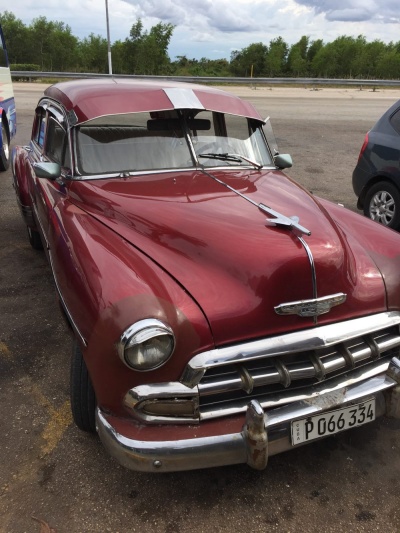
Overview
Endemics, wintering warblers, friendly people and some mojitos...
Birds
Roughly 400 species have been recorded in Cuba. The fauna has a distinctively North American feel, with southern families like Antbirds or Furnarids completely missing. It includes a significant component of Caribbean regional endemics.
Endemics
Cuba hosts around 30 endemic species. Several are only found locally and are very rare: three haven't been seen for a long time and are probably extinct (Zapata Rail, Cuban Kite and the Cuban form of Ivory-billed Woodpecker). Endemic species include:
Blue-headed Quail-Dove, Gray-fronted Quail-Dove, Cuban Nightjar, Bee Hummingbird, Zapata Rail, Cuban Kite, Gundlach's Hawk, Cuban Black Hawk, Bare-legged Owl, Cuban Pygmy-Owl, Cuban Trogon, Cuban Tody, Cuban Green Woodpecker, Fernandina's Flicker, Cuban Parakeet, Giant Kingbird, Cuban Vireo, Cuban Palm-Crow, Cuban Martin, Cuban Gnatcatcher, Zapata Wren, Cuban Solitaire, Zapata Sparrow, Yellow-headed Warbler, Oriente Warbler, Cuban Oriole, Red-shouldered Blackbird, Cuban Blackbird, Cuban Bullfinch, Cuban Grassquit
There are around 60 (additional) endemic subspecies.
Regional endemics
Cuba has a roughly equal component of Caribbean regional endemics. They include:
West Indian Whistling-Duck, Scaly-naped Pigeon, White-crowned Pigeon, Plain Pigeon, Key West Quail-Dove, Zenaida Dove, Great Lizard-Cuckoo, Antillean Nighthawk, Antillean Palm Swift, Cuban Emerald, West Indian Woodpecker, Cuban Amazon, Cuban Pewee, La Sagra's Flycatcher, Loggerhead Kingbird, Thick-billed Vireo, Cuban Crow, Bahama Mockingbird, Red-legged Thrush, Western Spindalis, Tawny-shouldered Blackbird, Greater Antillean Grackle, Olive-capped Warbler
Other Wildlife
Mammals
Cuba's mammal fauna includes around 80 species. Of these, more than a third (29) are strictly aquatic species like the West Indian Manatee, Trichechus manatus. Some 11 species are introduced: these include the Small Indian Mongoose, Urva auropunctata which has had a devastating impact on the native fauna. The best known endemics are the 7 extant hutia species (rodent subfamily Capromyinae) and the Cuban solenodon or almiquí (Atopogale cubana). The latter is restricted to extreme east Cuba [3].
Butterflies
Around 180 species regularly occur in Cuba, with some 20 additionally recorded as vagrants. Around 78 taxa (species and subspecies) are endemic to the country. At least one of these (Cuban Purplewing, Eunica heraclitus) is likely extinct [2].
Other groups
Cuba has a reptile fauna of around 160 species. Anoles (genus Anolis) are the largest component of this with some 60 species. Only Colombia has more anole species, and those in Cuba have diversified to fulfil many different niches. They include the largest Anolis, the Knight Anole, A. equestris, at around 50 cm.
Cuba has around 60 species of amphibians. They include some of the smallest vertebrates on earth. For example, the Monte Iberia eleuth (Eleutherodactylus iberia) is the smallest frog in the Northern Hemisphere and the third smallest overall [1].
Areas of interest
Most endemics can be seen in Cienaga de Zapata or Zapata Swamp. However, some species are confined to very small areas in the west or east of the island.
Access and Facilities
Birding in Cuba is easy. In most areas local guides can be a big help. Some knowledge of Spanish can be very helpful, even in tourist areas many people don't speak English. Accomodation can be limited in some places or booked out early. However, things may change fast now with the renewed relationship towards the USA. Since some time you can also rent private rooms.
Many birders visit Cuba with tour companies, however it's also possible to bird independently or with the help of a local company. Most hotels have lower standards compared with other islands in the Carribean.
There isn't much traffic on the roads and driving is easy. Public transport is mainly by bus (some train lines have now reopened) and usually slow.
External Links
- Cloudbirders - trip reports worldwide including Cuba
- Annotated Checklist for birds in Cuba
References
Pages in category ‘Cuba’
The following 4 pages are in this category, out of 4 total.



